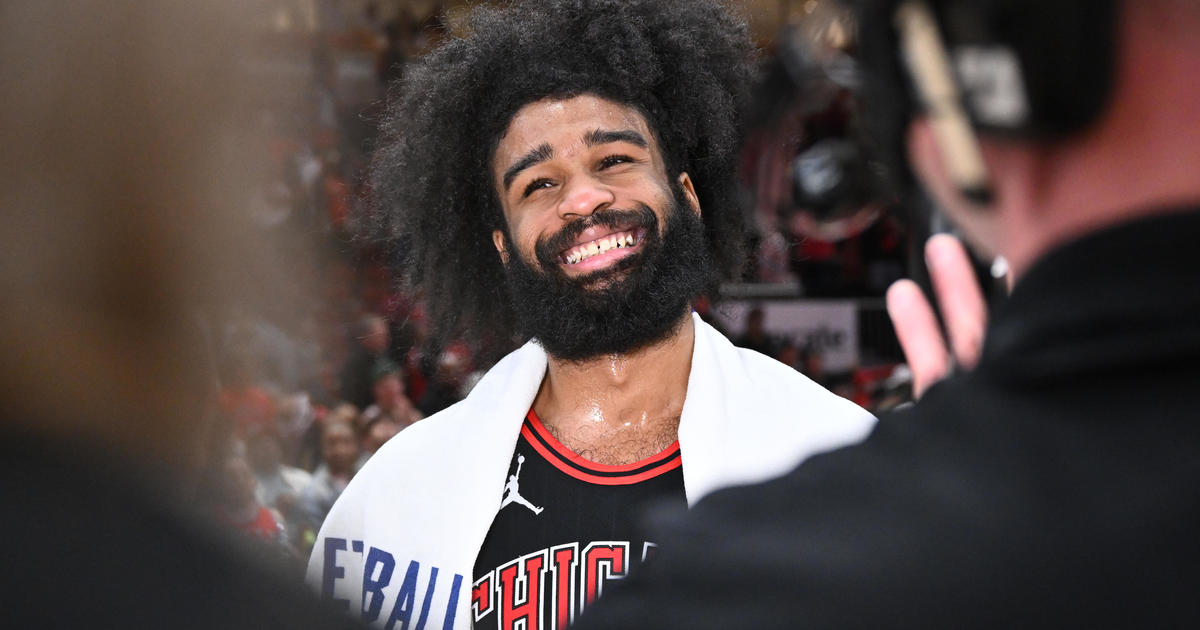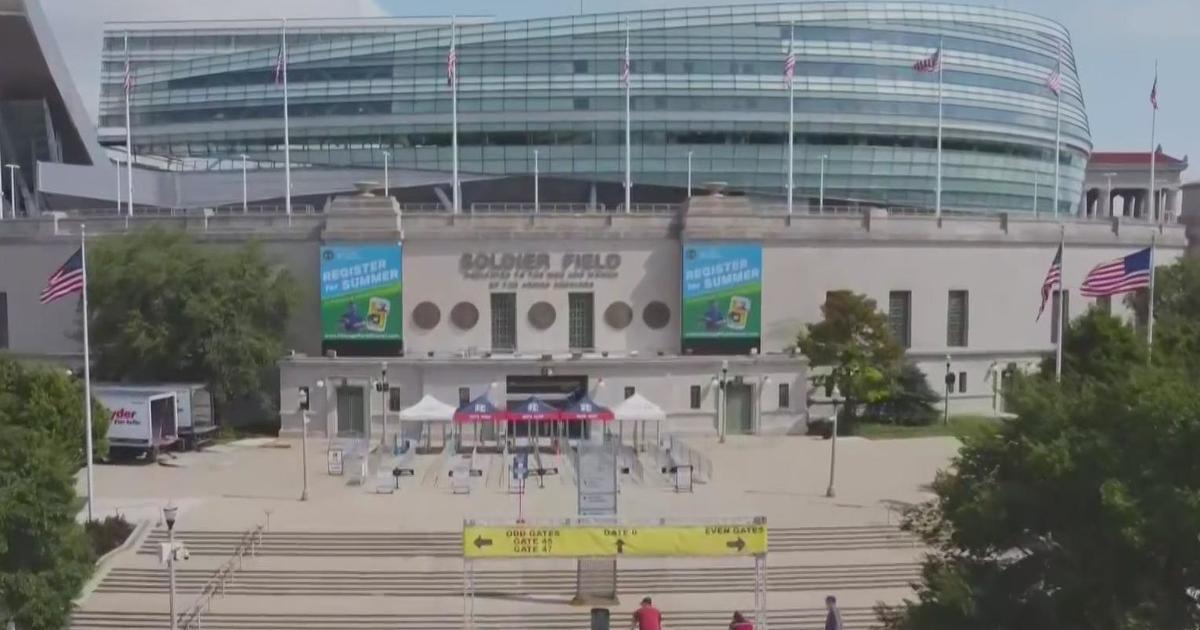Durkin: No Offense, Bears (Part Two)
By Dan Durkin-
(CBS) In part one of my take on what's at the root of the Bears offense's regression this season, the focus was on the underlying statistics and personnel. In the final entry, I take a look the Bears' imbalanced and predictable play-calling as well as step inside the film room to take a closer look at the on-field execution.
Heading into their Week 14 matchup against the Cowboys, the Bears ranked 31st in run-to-pass ratio (37.7 percent to 62.3 percent), ahead of just the lowly Oakland Raiders.
Considering the Bears ran the ball only 24 percent of their plays against the Cowboys, they've lowered their mark even more.
They say misery loves company, but no legitimate NFL offense shares statistical adjacency to the Raiders.
The Bears view their horizontal passing game as an extension of the running game. Relying on the passing game to consistently move the ball can lead to difficulties sustaining drives, which has certainly been an issue for the Bears this season.
Chicago coach Marc Trestman has paid lip service to the idea of being balanced, yet hasn't achieved it. In turn, he's willfully bypassed the Bears' best offensive weapon -- running back Matt Forte.
As pointed out in part one, the Bears' lack of a second tight end who can function as both a physical in-line tight end as well as a H-back or fullback has limited their two-back running schemes like lead and isolation and turned them into a one-back running team that frequently runs from an off-set shotgun formation with linemen in a two-point stance.
The Bears favor zone-blocked running schemes. This requires the offensive line to apply a set of blocking rules and work in concert to the play side, with the goal of getting movement at the point of attack. Forte has an aiming point on both inside and outside zone runs, so he presses the line of scrimmage and reads the setup of his blockers with a two-way go -- a front-side crease or back-side cutback lane.
However, the line hasn't been able to get a consistent push up front. Given Forte's alignment (closer to the line of scrimmage and off-set) his options have been limited in between the tackles.
Breaking tackles at or behind the line of scrimmage isn't Forte's running style. Consequently, the Bears have become somewhat gimmicky with their runs -- using their ghost motion package that features jet sweeps and end-arounds. However, they run that series from the same formation and use the same motion, which defenses have picked up on.
Below is an example from the Bucs game, in which the Bears deploy their preferred 11 personnel grouping in a doubles exchange formation in a 2-by-2 set. Bucs slot cornerback Leonard Johnson signals the formation alert to the defense.
Johnson is lined up over Brandon Marshall, but as Marquess Wilson starts in his ghost motion, Johnson leaves Marshall and heads for the weak-side A-gap, which is the aiming point for Forte on this play.
Clearly, the Bucs knew exactly what this play was going to be prior to the ball being snapped, otherwise Johnson wouldn't have left Marshall uncovered in the slot. Johnson flows to the A-gap and cuts off Forte's running lane, forcing a cutback.
Johnson is able to chase Forte down from behind and hold him to a one-yard gain.
Another example of the Bears' predictable play calling came during the Packers game when Clay Matthews sniffed out a Chris Williams end-around and dropped him for an eight-yard loss. Matthews knew before the ball was snapped exactly what was coming, based on his path up the field, firing off the edge by playing a hammer technique.
Matthews flew off the edge and targeted Williams in the backfield.
He dropped him dead in his tracks for a loss.
There was no hesitation from Matthews, who correctly read his keys -- formation and motion alert -- to take him directly to the ball carrier. This is another sign that the Bears don't do enough self-scouting of their own tendencies.
Another issue with the Bears offense has been the absence of a vertical passing game. In general, receivers Alshon Jeffery and Brandon Marshall win with leverage, not speed. But as discussed in part one, they've dealt with injuries for the majority of the season, which further complicates the team's ability to consistently get chunks of yardage down the field.
Consequently, teams have played a lot of zone coverage to keep a top on the defense. Without a speed receiver to take the top off of the defense, the Bears have struggled to get vertical. Given the protection issues they've experienced along the offensive line, they've been using max protect schemes to try and get vertical.
The thought process is that it will take longer for receivers to get down the field, and they need to keep more in to protect to make the pocket hold up long enough. But the results have been low-percentage throws with the defense doubling and sometimes tripling the receivers out in routes.
Rather than throwing deep balls to actually connect, the Bears are throwing them out of obligation in an attempt to keep the defense honest, which isn't working.
The Bears are dialing up less of the vertical and three-level concepts they ran last season and using more shorter route combinations, typically with receivers facing Cutler as they catch the ball. This requires them to dig their cleats in the ground, pivot and try to break tackles to gain yardage. That's not a sustainable approach to gain yards.
The last aspect that is frequently showing up on film is Cutler not seeing the field.
Cutler can read defenses, and he can work through his progressions. His issue is he doesn't do it consistently. He will still revert back to his default setting of locking in on his primary read to come open and trying to force the ball in.
Cutler stares down Marshall throughout his dropback on this three-man seam/curl/flat route combination.
He then forces a pass into the curl-flat zone, missing Jeffery wide open up the seam.
Locking into his receivers also leads to lapses in Cutler's mechanics, as he will commonly throw with his feet not set and his torso pointing at his target, opposed to his front shoulder. This leads to throws that are all arm that don't arrive on target, even with elite arm strength.
This pass is an example of that very scenario. He's locked in on Forte with a loose lower body framework -- meanwhile, Santonio Holmes is wide open over the middle -- on a pass that's intercepted and returned for a pick-six.
After 13 games, they've yet to strike a balance or find an identity. Trestman's play-calling has been questionable and timid. The Bears willingly make themselves one-dimensional, which simplifies game planning for opposing defensive coordinators.
After two years on the job, it's clear the Bears are not pointed in the right direction.
Obviously, there are major issues on defense and special teams, spanning scheme and personnel. But the undeniable fact was this team was predicated on being a dominant offense, which they're nowhere near being.
Clearly, this has been one of the most disappointing seasons, purely based the expectations the team put on itself. Their 5-8 struggle this season calls into question just how in touch the current brain trust is with building a legitimate contender.
Dan Durkin covers the Bears for CBSChicago.com and is a frequent contributor to 670 The Score. Follow him on Twitter at @djdurkin.















